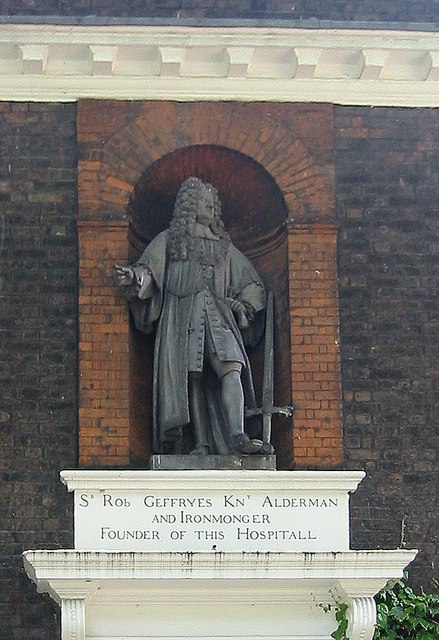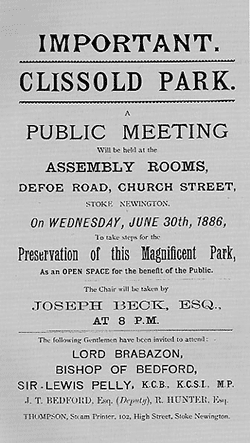A round up of recent reckonings with the Borough’s colonial and slave-trading past.
Vote held on renaming of Cassland Gardens
Back in December, the Council organised a ceremony for the removal of the sign on Cassland Gardens E9, which was named after slavetrader John Cass:
There was a poll for Hackney residents to vote on options for a new name for the space. The Council’s Review, Rename, Reclaim initiative crowdsourced some suggestions and identified four black former residents of Hackney to choose between:

S.J. Celestine Edwards (1857/8-1894) – activist, editor and campaigner on anti-colonial and anti-racism.
Kathleen ‘Kit’ Crowley (1918-2018) – respected Cassland Road working class resident.
Francis ‘Frank’ Owausu (1954 – 2018) – arrived in Hackney as a child political refugee. Teacher and co-founder of the African Community School (a “supplementary school” similar to the one shown in a recent episode of Steve McQueen’s “Small Axe” TV series).
Ralph Adolphus Straker (1936 – 2013) – union activist, anti-SUS law campaigner, Hackney Community Relations Council, African and African Carribbean arts patron.
There is a nice PDF with photos and biographical information about the four people here.
Voting on this has now closed and the new name will be announced in May.
(After a similar consultaiton and poll, the square outside Britannia Leisure Centre will now be renamed BRAFA Square after the Hackney-based 1980s British Reggae Artists Famine Appeal.)
#GeffryeMustFall / Museum of the Home
In other racist memorial news, I was amused to see the Museum of the Home on the scrounge for cash for a new green roof:

The roof of the museum also features its infamous statue of slavetrader Robert Geffrye. If the Museum thinks that sticking some flowers up there will distract us from Geffrye’s blood-stained stone hands, then they are sadly mistaken. Far be it for me to suggest that getting up on the roof is an opportunity for an unfortunate masonry based accident…
The Museum has finally added a page on the statue to its website which states that:
The Board and Museum team are continuing to review, discuss and explore options for the statue.
In the meantime we will reinterpret the statue honestly and transparently to tell the history of Geffrye’s career and his connections with the forced labour and trading of enslaved Africans. And we will acknowledge that the statue is the subject of fierce debate.
We will confront, challenge and learn from the uncomfortable truths of the origins of the Museum buildings, and fulfil our commitment to diversity and inclusion.
My position remains that the statue should be removed and that people should not visit the museum until it is.
Tyssen School is changing its name

Tyssen School will become Oldhill Communty School and Children Centre in September 2021:
This is due to the dubious past of the Tyssen family; who the school is currently named after. As part of the Review, Rename, Reclaim Project, Hackney Education informed the school that the Tyssen family played a part in the slave trade. The local authority has, consequently, supported the school to change their name. After consultation with our families and the local community, we decided on the new name Oldhill Community School and Children Centre.
The link above includes a crowdfunder to help with the changes, including new uniforms and tablets for pupils in need.
There is more information on the Tyssen family and its connections to Hackney and the slave trade in a previous post.
Robert Aske and Hackney

Aske Gardens (Pitfield Street, Hoxton) is laid out on land bought in 1690 by the Haberdasher’s Company with money left by Robert Aske.
And where did Aske get his money from? Well, as our colleagues at Reclaim EC1 note, a large portion of his fortune came from his significant investments in the slave-trading operation known as the Royal Africa Company.
As comrade Transpontine notes:
According to historian William Pettigrew, the RAC ‘shipped more enslaved African women, men and children to the Americas than any other single institution during the entire period of the transatlantic slave trade’ (Freedom’s Debt: The Royal African Company and the Politics of the Atlantic Slave Trade, 1672-1752, 2013) including more than 150,000 slaves forcibly transported to the British Caribbean.
Geffrye, Tyssen and Cass are identified as “contested figures” as part of the Council’s Review, Rename, Reclaim initiative. But Robert Aske is not mentioned.
More promisingly, schools named after Aske in New Cross and Elstree are reported to be considering a change of name. A statement issued by the schools’ sponsor, the Haberdashers Company, states:
‘The Haberdashers’ Company and its Schools in Elstree and South London have become aware that Robert Aske was a shareholder in the Royal African Company (RAC). All are clear that the role of the RAC in the slave trade was deplorable and sits in stark contrast with the values which underpin the activities and philosophy of the Company, its schools and beneficiaries today. The schools are already engaged in comprehensive reviews of culture, values and their brands and this matter will be included. The outcome of these fully consultative deliberations, including the future use of the Aske name, will be communicated when conclusions are reached and decisions made. The Haberdashers’ Company is proud of its ethos of benevolence, fellowship and inclusion, and the diverse nature of its membership’.

I hope this sensitivity and momentum can be maintained and that a more appropriate name for Aske Gardens can be found – as well as for the other memorials to Aske in Hackney identified by Reclaim EC1:
Obviously the name of Aske Gardens requires change. It seems likely that nearby Aske Street (N1 6LE postcode) is also named for the merchant Robert Aske and if this is the case it should be changed too.
Likewise, given Aske’s strong association with the Haberdashers’ Company we’d like to see the names of the nearby Haberdasher Estate and Haberdasher Street changed – it should also be noted that the Haberdashers’ Company is closely associated with slave trade figures such as the lord mayor Sir Richard Levett, who will be addressed in part 8 of this series.
A Zen internet page dedicated to Aske’s Hospital and Almshouses is among the places that note this listed building has been converted into flats and is now called Hoffman Square (N1 6DH), but there are stone panels at the front entrance detailing its history (relevant webpage here) that should be removed or at the very least amended to record Aske’s investment in the slave trade.
Latest Salvo in the Culture Wars
Toyin Agbetu is one of the participants in the removal of the Cassland Road sign shown at the top of this post. As a representative of the Ligali organisation he has talked a great deal of sense on Hackney’s colonial legacy and how this might be addressed. Hence him being invited by the Council onto their Review, Rename, Reclaim initiative and Sadiq Khan’s Commission for Diversity in the Public Realm. He also has a fascinating history in music as a street soul artist.
The Conservative Party is rabidly opposed to any nuanced consideration of colonialism. A previous post on this blog looked at Minister for Culture Oliver Dowden’s interference with the Museum of the Home’s public consultation on the future of the Robert Geffrye statue. So it is hardly surprising that the Tories have subjected individuals on the Mayor’s Commission to intense scrutiny.
Initially Toyin came under fire for having heckled the Queen back in March 2007, during a Westminster Abbey church service held to recognize the 200th anniversary of the abolition of the Slave Trade Act. Reader, it may not surprise you that this only made my affection for Mr Agebtu grow.
We all have skeletons in our cupboards and perhaps inevitably the Tories kept going until they found something more damning. Some brief comments by Toyin about the COVID-19 Pfizer vaccine, which were unwise in my view, were blown out of proportion in the right wing press.
Some comments discovered by Jewish News are very troubling however, and have led to Mr Agbetu resigning from the London Mayor’s Commission. Toyin’s statement to the Hackney Citizen gives his side of the story and announces that a more developed response will be forthcoming after the elections in May.
Previous posts of interest:
Kick Over The Statues: Slavery and Hackney campaign
Government demands Museum of the Home keeps racist statue against wishes of the community
Outrage at museum’s “racist statue must stay” decision
Hackney’s Museum of the Home says its racist memorial is OK, actually
































